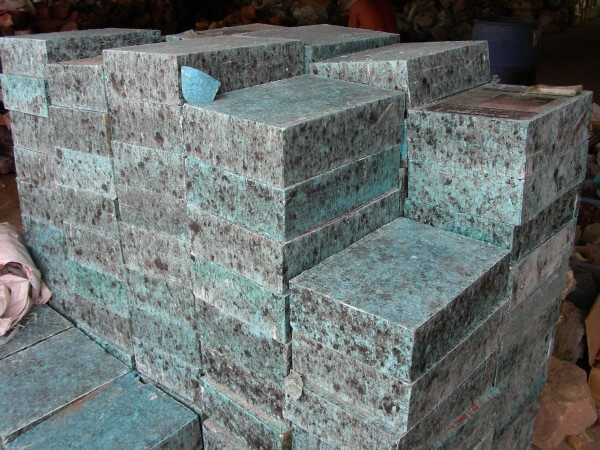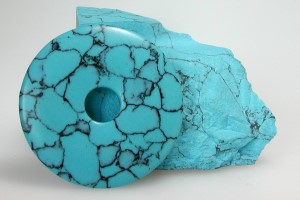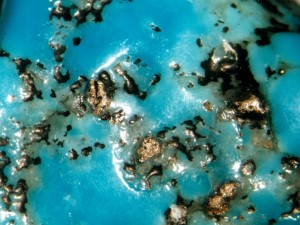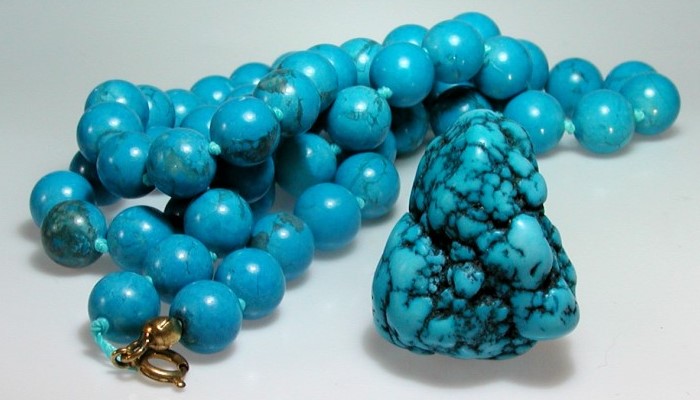The millennia-old preference for the sky blue stones also led to a negative superlative: turquoise has been treated and imitated like no other gemstone in the past and present. Even 5,000 years ago the ancient Egyptians produced a ceramic with turquoise glaze made of copper salts. However, today's possibilities of 'enhancements' and imitations go much further.
Matrix induced turquoise
The presence of dark spots and veins is no longer a sign of the authenticity of turquoise. These veins known as "matrix" usually consist of remnants of the parent rock and can contain mica, slate, calcite, hematite and copper oxides. Turquoise with particularly finely drawn matrix lines is called »Spiderweb Turquoise«.
In stabilized and reconstructed turquoise this matrix can be imitated deceptively realistically with ink or black cement which is pressed into the cracks and fissures of the stone. For this purpose, the stone is dipped into a tar-like substance that adheres to the surface. In the subsequent grinding and polishing process, this foreign substance is largely removed. It remains only in the cracks and depressions, which results in a good imitation of the turquoise matrix.
Dyed Magnesite
A popular turquoise imitation which consists of blue dyed magnesite, calcite or very rarely howlite is sometimes traded under the name "Turkenite". More often it is sold as "turqoise" without further comment, or - in it's undyed state - as "white turquoise".
Magnesite can also get an induced matrix to imitate »Spiderweb Turquoise«. Colored howlite is hardly ever used anymore. Because of the rarity of the raw material it has been replaced by colored magnesite.
Pressed Products


Artificial product modelled on turquoise
So-called "pressed products" are a frequent imitation. The basic material is a cement-like powder which is colored and pressed into rectangular bars with the aid of synthetic granules. The color of these artificial products can be a uniform light blue or contain fine matrix veins. Natural minerals such as pyrite can also be mixed in.
'Neoturquoise', 'Viennese Turquoise', 'Reese Turquoise' (neolite) and 'Gilson Turquoise' are trade names that wrongly contain the word "turquoise". They have nothing to do with genuine turquoise. To distinguish untreated and treated turquoise and some of its imitations the determination of their specific gravity (density) often gives a useful hint.
Author: Dipl.-Min. B. Bruder
© INSTITUT FÜR EDELSTEIN PRÜFUNG (EPI)






